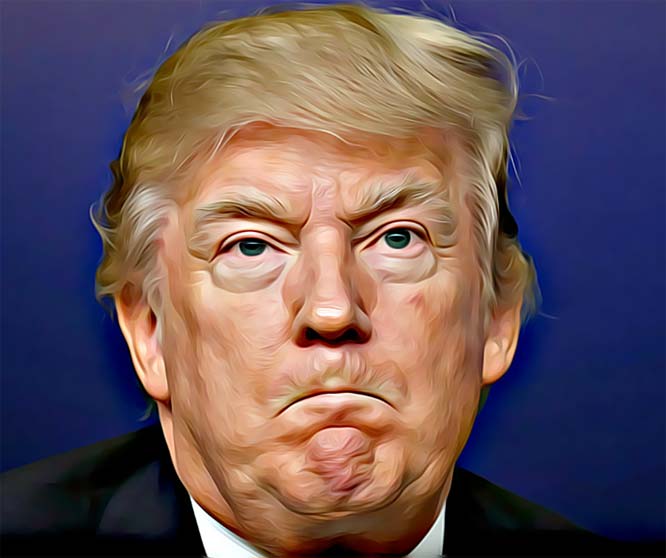
The president, after all, called his 2016 opponent, Hillary Clinton, "a nasty woman." He has called his top female political foil, House Speaker Nancy Pelosi, nasty, too. He has called both of his two most likely female 2020 opponents - Kamala Harris and Elizabeth Warren - nasty. He has called San Juan Mayor Carmen YulÃn Cruz and Sen. Mazie Hirono, D-Hawaii, nasty. Even the American-born Meghan, Duchess of Sussex, was too "nasty" toward Trump.
Here's what we can say after a thorough review of Trump's public remarks, media reports and social media accounts: He has applied this label to many of his female opponents, but he has applied it to lots of men, too. Slightly more, actually. It's a phrase he very often reaches for in response to obvious or just perceived slights.
Here's a list of women who have drawn the label since Trump launched his 2016 campaign:
1. Frederiksen
2. Clinton
3. Pelosi
4. Harris
5. Warren
6. Mayor Cruz
7. Hirono
8. Markle
9. Omarosa Manigault Newman
10. Reporter April Ryan
11. GM CEO Mary Barra
12. An unnamed Jeb Bush staffer
13. Former business associate Barbara Res
14. Canadian Foreign Minister Chrystia Freeland (reportedly)
The number of women on this list is actually less than the number of men Trump has applied the label to. On that list are (surprise) many of his top 2016 GOP primary opponents:
1. Marco Rubio
2. Ted Cruz
3. Bush
4. Lindsey Graham
5. Mitt Romney
6. Texas Gov. Greg Abbott
7. Former Clinton campaign chairman John Podesta
8. London Mayor Sadiq Khan
9. Fox News pundit Juan Williams
10. Evangelical leader Russell Moore
11. New York Times columnist Tom Friedman
12. CNN's David Gregory
13. MSNBC's Donny Deutsch
14. The late conservative columnist Charles Krauthammer
15. New York City union leader John Cody
16. Former business associate Jack O'Donnell
17. An unnamed male TV columnist who gave "The Apprentice" a poor review
18. Osama bin Laden
(Not that anybody would begrudge that last one.)
There have been a couple of other times when Trump has used the words "nasty" in reference to men, but in a positive way. These include while reminiscing about the 2016 campaign with foes-turned-allies such as Rick Perry and Scott Walker. Trump has also called the late general George Patton, national security adviser John Bolton and European Commission President Jean-Claude Juncker "nasty," but done so admiringly.
So what's the takeaway here? There are obviously slightly more men than women, so you could argue Trump is an equal-opportunity "nasty" labeler. He seems to have few qualms about attaching the label to basically anybody he's pitted against, and the fact that it is used so frequently against his campaign opponents is telling.
Clinton made "nasty woman" a rallying cry when Trump said it in a debate late in the campaign, but Trump actually used the word even more often while talking about some of his GOP primary opponents - wielding it multiple times against some of them, including Rubio and Cruz.
Trump has a well-documented habit of using degrading language to describe women in gendered and degrading ways (here's one lengthy compilation of ways he's done that both before and since his political career began). That context is important to understanding why there is typically more outrage when he uses "nasty" to defend himself against perceived slights by women.
Politics is still a business that is dominated by men. Congress is more than three-quarters male - similar to the breakdown of all politicians worldwide - and more than 60 percent of all world leaders are male. As president of the United States, Trump is coming into contact with many more men than women, and yet the numbers are similar. That could be sheer coincidence and circumstance, or it could say something about how much more Trump is taken aback when women say things he doesn't like.
Trump also has an almost-insatiable desire to provoke, and using "nasty" on women has proven a great way to ruffle feathers.
Sign up for the daily JWR update. It's free. Just click here.
(COMMENT, BELOW)

